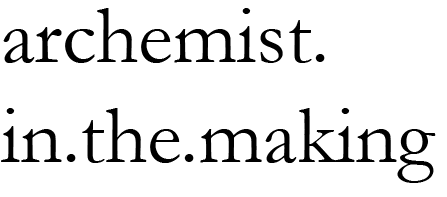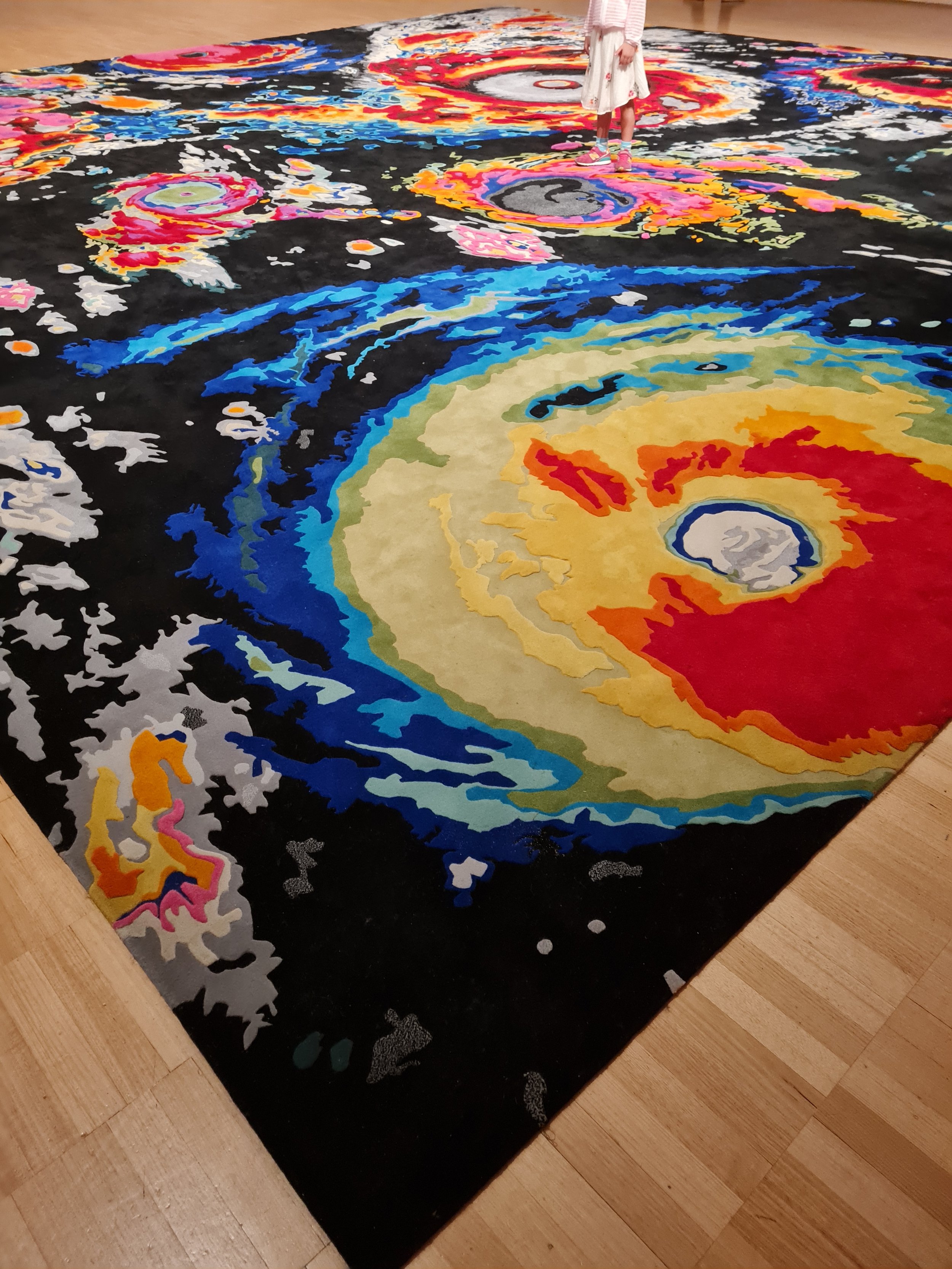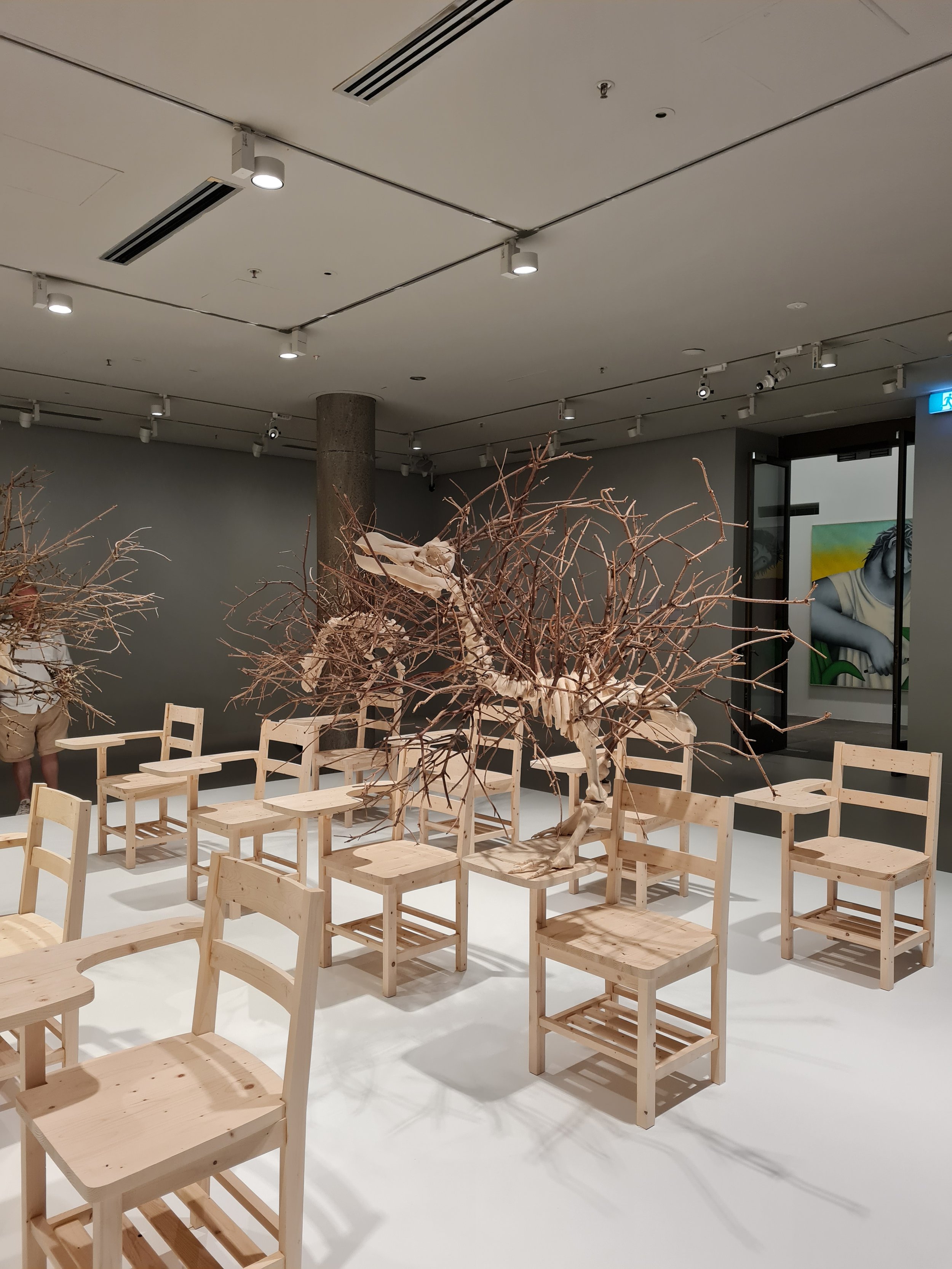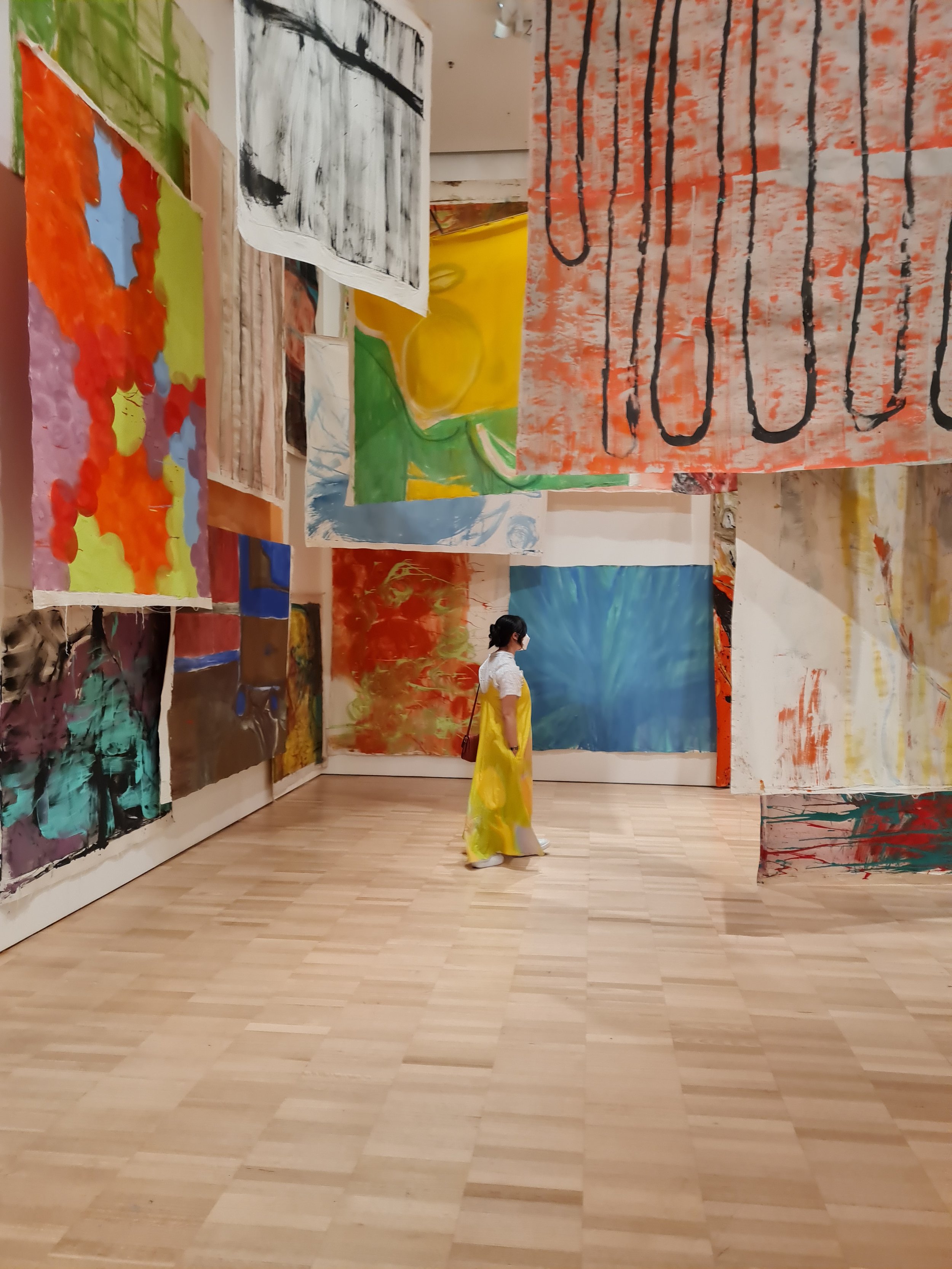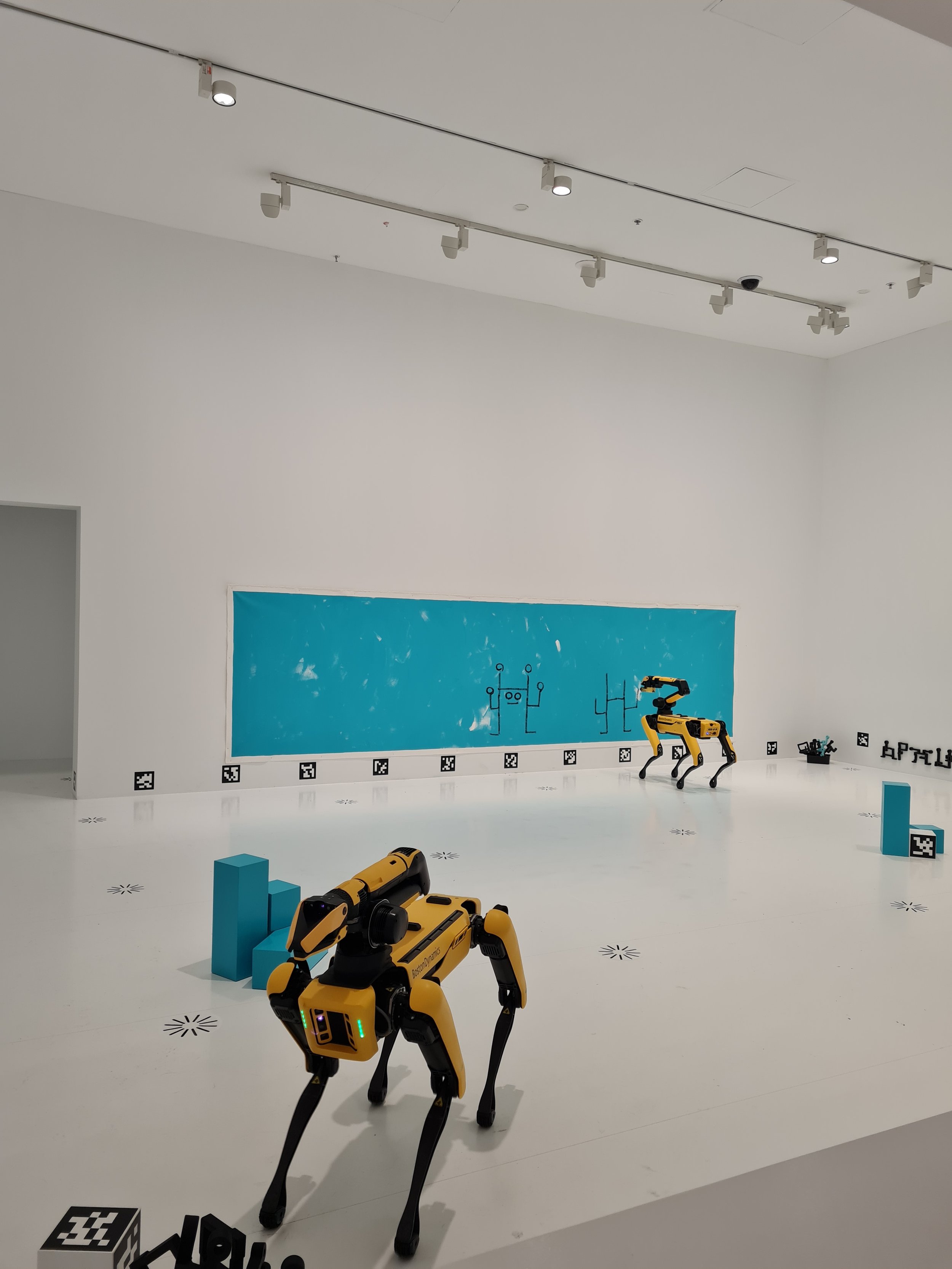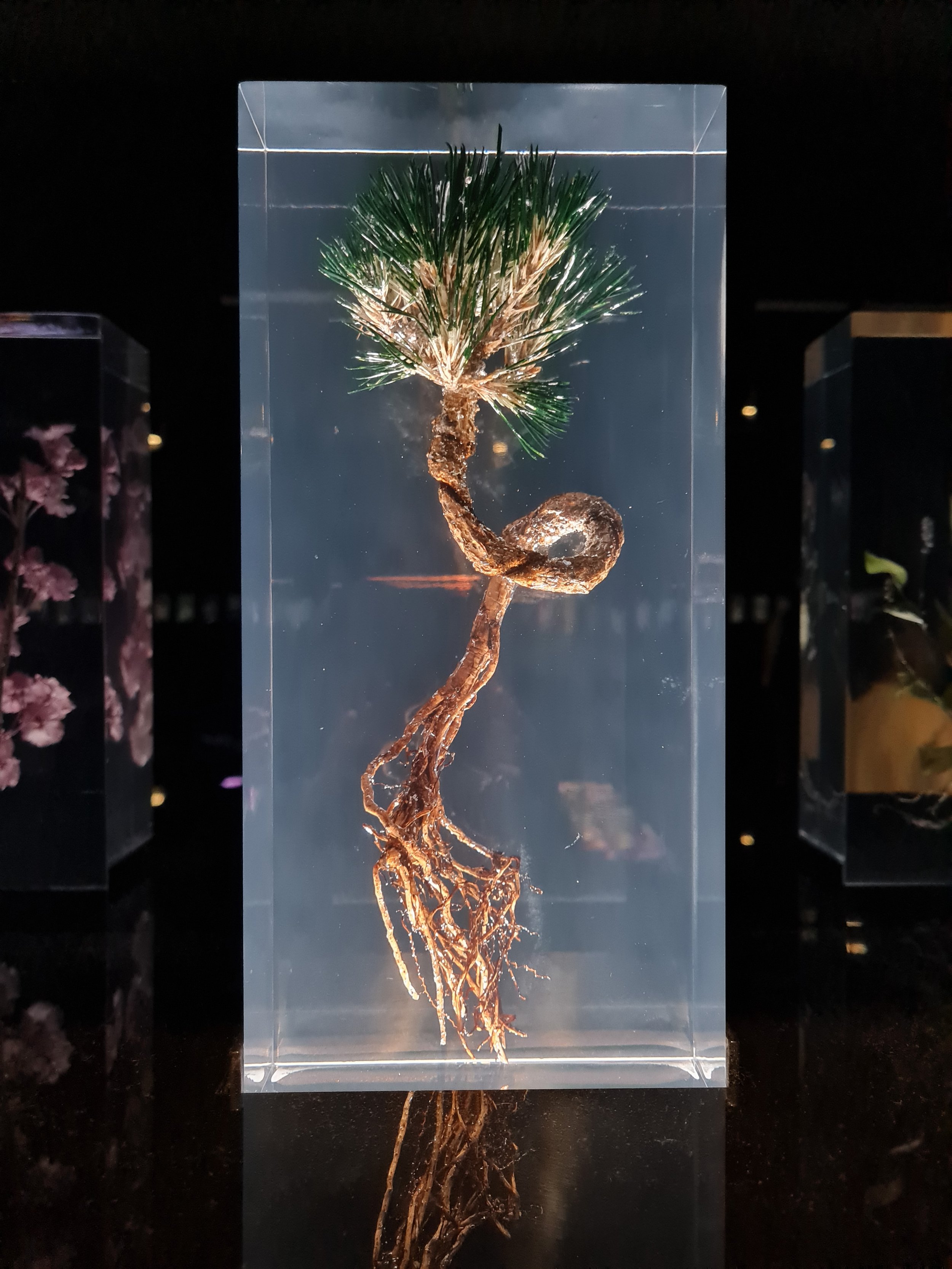*NGV Triennial is open until 7 April 2024
With the theme Magic, Matter and Memory being the anchor for the commissioned artists’ brief – NGV triumphantly returns with another Triennial Exhibition that shouts bigger, better and awe. In this third instalment – the characteristic of the installation feels cohesive in comparison to the previous. The collection this time feels more vibrant and as always reflective of society’s cultural and zeitgeist shift in the past couple of years. In essence – it is resemblant to an insight into the explosive moments during the artist’s creative process.
Speculum -SMACK
The hectic (and almost near-absent) years of the pandemic which has umbrellaed significant events were woven tightly in the previous triennial. On the contrary, this year’s selection and commission is akin to a celebration of the perceived freedom sprinkled with a level of measured discussion of the political landscape in-between.
Perhaps it’s the flexibility and returned opportunities in the collaboration process that this year’s curation and choreography of the series feel aptly integrated. Whether it is Franziska Furter’s vivid Liquid Skies/ Gyrwynt – a carpet that reads as a meteorology map; Vivian Suter’s The day is gone – a collection of painted canvases that are hung and rearranged depending on the selected gallery space; Hugh Hayden’s The end – an empty classroom dominated by imaginative skeletal creatures; or my personal favourite – Petrit Halilaj’s Very volcanic over this green feather, each creation demands viewers’ acknowledgement of its presence, power and ambience. Added these installations present layers of visual tactility that one can sense despite the inability to physically touch the object.
Mun-Dirra (Maningrida Fish Fence) - Freda Ali Burarra-Martay;Freda Wayartja Ali Burarra-Martay; Maureen Ali Burarra-Martay; Cecille Baker Burarra-Martay; Michelle Baker Burarra; Bonnie Burarngarra Burarra/Yan-nhaŋu; Gabriella Garrimara Burarra-Martay; Doreen Jinggarrabarra Burarra Anbarra; Lorna Jin-gubarrangunyja Burarra-Martay; Indra Prudence Burarra-Martay; Jennifer Prudence Burarra-Martay; Zoe Prudence Burarra-Martay; Anthea Stewart Burarra-Martay
Travelling from each room, and watching the space expand and contract brings sense of yearning, wonder and ‘what ifs’ when appreciating the work. The nuances are reflected in their selection of craft and energy projected from the characters created in these installations. The curatorial team too – has cleverly added the tensions between artists’ commentary through the circulation between each artists’ statement. These include Agnieszka Pilat’s Robot dogs (trained to paint and tap dance!) against Kevin Abosch’s AI generated images of protests; the beauty of nature and the horrors present between Halilaj’s installation and Azuma Makoto’s captivating resin flower blocks. While there may have been tension visible in the previous Triennials – this year’s collection of work is highly palpable given their scale and immediate juxtapositioning, (and perhaps coincidentally, mirroring the discussions constantly found in my social channels). Each layout implores me to laugh, celebrate and grieve through the layers interlaced in the artists’ visions.
While I immensely enjoyed the photo opportunities presented in NGV (after all, its popularity increased when it began to relish in the power of social media) – I can’t help but wonder if those who are taking photos (guilty) are also taking in the messages or the journals each artist is sharing. Standing among the audience who were transfixed on the young documentary highlighting the traumas of Halilaj’s experience during the Kosovo war – I can’t help but feel strongly at the level of considered sensitivity desired by the artist. Sometimes, there are works that I want to photograph, and sometimes, the messages are so heavy that it feels almost disrespectful to document it on my phone. Where initially, my friend and I entered the gallery laughing at Maurizio Cattelan’s Comedian (the famed banana) – we left the gallery in a sombre mood as the depth and vulnerability of eventual artworks became stronger.
With that said, I am left in a position to carefully balance my emotions between each creation – which is an experience I often enjoy, and perhaps it’s something that the curators wanted, knowing that among the chaos there is, optimism, perseverance and hope will keep us going.
RIFIFI - Jean Jullien for NGV Kids
This entry is written on the lands of the Wurundjeri Country of the Eastern Kulin Nation..
